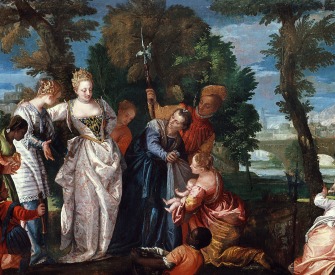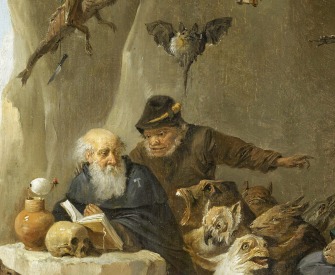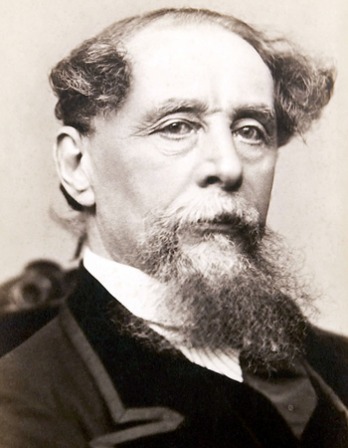There was a book lying near Alice on the table, and she turned over the leaves, to find some part that she could read, “For it’s all in some language I don’t know,” she said to herself.
It was like this:

She puzzled over this for some time, but at last a bright thought struck her. “Why, it’s a looking-glass book, of course! And, if I hold it up to a glass, the words will all go the right way again.”
This was the poem that Alice read:
JABBERWOCKY
’Twas brillig, and the slithy toves
Did gyre and gimble in the wabe:
All mimsy were the borogoves,
And the mome raths outgrabe.
“Beware the Jabberwock, my son!
The jaws that bite, the claws that catch!
Beware the Jubjub bird, and shun
The frumious Bandersnatch!”
He took his vorpal sword in hand:
Long time the manxome foe he sought—
So rested he by the Tumtum tree,
And stood awhile in thought.
And, as in uffish thought he stood,
The Jabberwock, with eyes of flame,
Came whiffling through the tulgey wood,
And burbled as it came!
One, two! One, two! And through and through
The vorpal blade went snicker-snack!
He left it dead, and with its head
He went galumphing back.
“And hast thou slain the Jabberwock?
Come to my arms, my beamish boy!
O frabjous day! Callóoh! Callay!”
He chortled in his joy.
’Twas brillig, and the slithy toves
Did gyre and gimble in the wabe:
All mimsy were the borogoves,
And the mome raths outgrabe.
“It seems very pretty,” she said when she had finished it, “but it’s rather hard to understand!” (You see she didn’t like to confess, even to herself, that she couldn’t make it out at all.) “Somehow it seems to fill my head with ideas—only I don’t exactly know what they are! However, somebody killed something: that’s clear, at any rate.”
From Through the Looking-Glass. A mathematician and photographer as well as a writer, Carroll (né Charles Dodgson) first told a story about a girl falling down a rabbit hole to the ten-year-old Alice Liddell while at a picnic in 1862. “Oh, Mr. Dodgson,” she said, “I wish you would write out Alice’s adventures for me!” After the success of Alice’s Adventures in Wonderland, published in 1865, he wrote this sequel, using more stories he told to Liddell. The two-volume Alice was the most popular children’s book in England when he died in 1898.
Back to Issue





